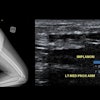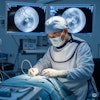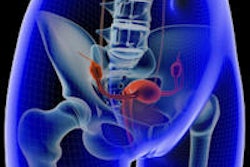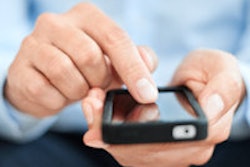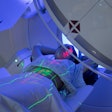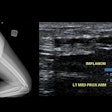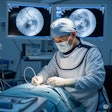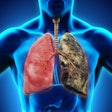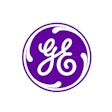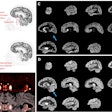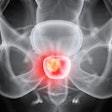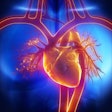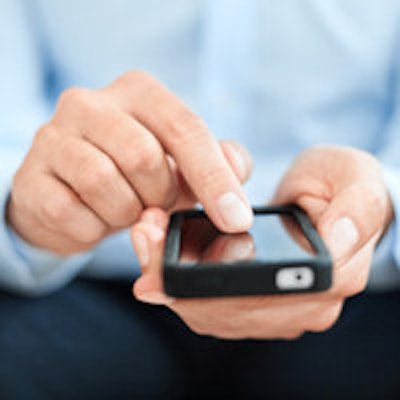
On-call radiology residents can reliably use a smartphone to get after-hours advice from more experienced or specialized radiologists on challenging CT cases for the diagnosis of appendicitis, Korean researchers recently reported.
In a study that simulated an iPhone consultation with offsite abdominal radiologists, a team from Seoul National University Bundang Hospital found that the diagnostic performance of offsite smartphone readings didn't differ significantly from in-house preliminary reports. Furthermore, the smartphone yielded higher diagnostic confidence.
"Based on this result, we calculated that a mobile consultation is recommended to be used as an adjunct to an on-call radiologist's preliminary report when the on-call radiologist's diagnosis of appendicitis is not conclusive," said Dr. Nak Jong Seong, a radiology/clinical assistant professor. Seong presented the findings during a scientific session at RSNA 2013 in Chicago.
Reading emergency studies
As is common in Korea among teaching referral hospitals, Seoul National University Bundang Hospital uses on-call radiologists -- mainly radiology residents -- for reading emergency radiology studies in the evenings and on weekends. On-call radiologists sometimes require a second opinion on inconclusive or difficult cases that affect surgical decision-making, Seong told AuntMinnie.com.
"Although we have a Web-based PACS for the secondary opinion to the experienced radiologists, they can't be at their workstation seven days a week," he said. With the recent advances in mobile device technology, the researchers sought to evaluate image reading on smartphones by simulating a mobile consultation on cases with an inconclusive diagnosis of appendicitis.
From a previous randomized, controlled trial involving acute appendicitis, the researchers gathered 68 cases with inconclusive reports. These reports had a diagnostic confidence grade by the on-call radiologist of 2 ("Probably absent. Clinical observation is recommended."), 3 ("Indeterminate. Clinical observation or surgical exploration is recommended."), or 4 ("Probably present. Surgical exploration is recommended.") on a Likert five-point score.
The 68 patients consisted of 32 men and 36 women, with an average age of 28.1 ± 9.9 years. Of these, 29 had appendicitis and 39 did not.
Two offsite abdominal radiologists retrospectively reviewed the CT images using an Apple iPhone 4 and a commercial mobile PACS image viewing application (Infinitt). Images were viewed in JPEG format on the iPhone in standard stack view in both axial and coronal planes.
Using the diagnosis of acute appendicitis as the reference standard, the researchers employed receiver operator characteristics (ROC) analysis to compare the diagnostic performance of the preliminary reports from the on-call radiologist, the final reports produced by the in-house attending abdominal radiologist, and the retrospective review by the two offsite iPhone readers. Sensitivity and specificity were also determined.
Interobserver agreement was evaluated using kappa statistics (κ = 1 signifies full agreement), while diagnostic confidence was measured using heat maps with a dendrogram, as well as Wilcoxon signed-rank tests.
| Interobserver agreement by consultation type | |
| Consultation type | Kappa |
| On-call radiologist, attending abdominal radiologist | 0.59 |
| On-call radiologist, smartphone reader 1 | 0.61 |
| On-call radiologist, smartphone reader 2 | 0.64 |
| Attending abdominal radiologist, smartphone reader 1 | 0.79 |
| Attending abdominal radiologist, smartphone reader 2 | 0.80 |
| Smartphone reader 1, smartphone reader 2 | 0.90 |
"Interobserver agreement between the abdominal radiologist and smartphone readers 1 and 2 was good," Seong said.
| Diagnostic performance by reader type | ||
| Reader type | Area under the curve (AUC) | P-value for difference with attending abdominal radiologist |
| On-call radiologist | 0.85 | 0.02 |
| Attending abdominal radiologist | 0.97 | N/A |
| Smartphone reader 1 | 0.91 | 0.10 |
| Smartphone reader 2 | 0.92 | 0.09 |
"The AUC of the in-house attending abdominal radiologist reader was greater than the on-call radiologist, but the smartphone readers did not differ [significantly] from the on-call radiologist and the abdominal radiologist," he said.
| Sensitivity, specificity for acute appendicitis by reader type | ||
| Reader type | Sensitivity | Specificity |
| On-call radiologist | 82.7% | 79.5% |
| Attending abdominal radiologist | 96.6% | 84.6% |
| Smartphone reader 1 | 82.8% | 87.2% |
| Smartphone reader 2 | 89.7% | 76.9% |
Heat map and dendrogram analysis revealed that the smartphone readers had higher diagnostic confidence than the on-call radiologist; there was no statistically significant difference between the smartphone readers and the attending abdominal radiologist.
"Although the offsite smartphone reading did not [differ significantly] from the on-call radiologist report, the smartphone reading shows higher diagnostic confidence than the preliminary report," Seong said.


